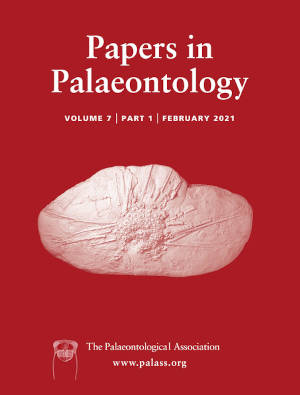Reg. Charity No. 1168330

Darwinulocopina is an interesting group of ostracods that includes some of the first invaders of freshwater habitats during the late Palaeozoic. The Permian–Triassic extinction greatly reduced their diversity, culminating in a single extant family. The darwinulids are regarded as ‘ancient asexuals’ given that a parthenogenetic mode of reproduction is assumed for all post-Triassic members of the group. However, the high diversity achieved during the late Palaeozoic is often associated with sexual reproduction. Here we studied a monospecific assemblage of ostracods from the Middle Triassic of the Cuyo Basin, Province of Mendoza, Argentina, recognizing a new species of Darwinulocopina, Prasuchonella? huarpe sp. nov. We discuss the traditional length/height and length/width graphical method for identifying ontogeny/sexual dimorphism in fossil ostracod assemblages. A geometric morphometric analysis was performed on both lateral and dorsal views of almost 170 carapaces, to evaluate the ontogeny and sexual dimorphism of the species. The best results were obtained from the analysis in dorsal view, discriminating four ontogenetic stages. This revealed a main ontogenetic trend related to the development of the brooding chamber. Although subtle in difference, female carapaces are wider not only at the brooding chamber, but also along the whole length, compared with the presumptive males. We provide full systematic descriptions and discussions, attempting to unify descriptive criteria for recent and fossil darwinulocopine carapaces, and suggest closeness to species previously described from the upper Permian of Russia. As a result, we recommend a review of Mesozoic records of Darwinulocopina, particularly those from the Triassic.